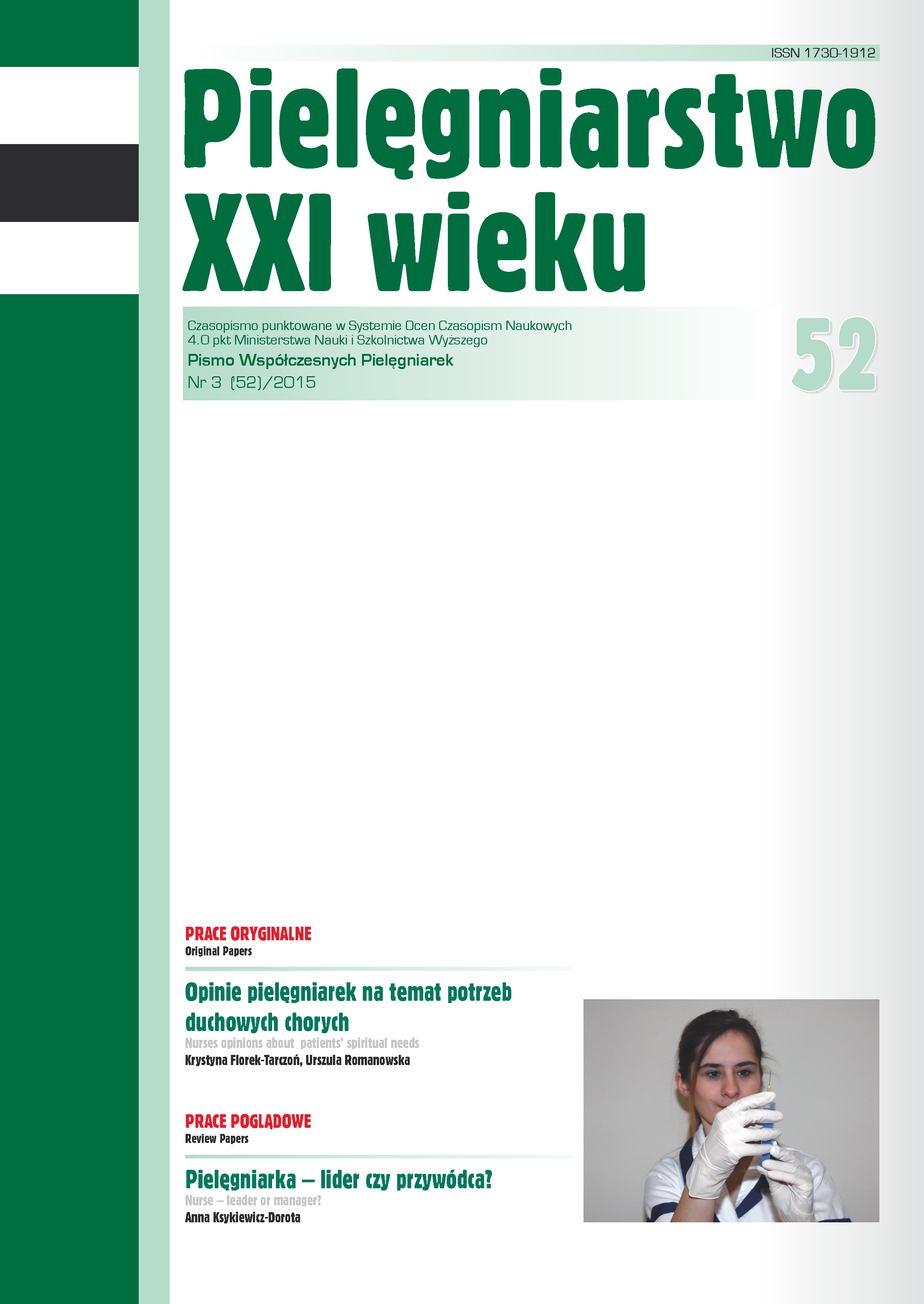A midwife in Italy
DOI:
https://doi.org/10.12923/p21w-2015-3/37Keywords:
midwife, act, midwives careAbstract
A MIDWIFE IN ITALY
Introduction. Midwifery is one of the world’s oldest professions. Midwives are found in every corner of the world but the scope of their professional expertise may differ in various countries. Although there are numerous documents listing the midwife’s essential competencies, these professionals have to cope with various problems trying to upgrade their skills. A great example of that struggle could be found in Italy. This is one of the countries where midwives keep on fighting for autonomy. Theoretically, an Italian midwife is an independent health care employee, holding a university diploma and a license. In practice, most midwifes work only in hospitals. Italy is a country with the highest rate of caesarean sections in the European Union. In 2013, the rate was 36.3%. The obstetric care is dominated by gynecologists, whilst only some 3% of pregnancies is handled by midwives. This is due to the poor organization of medical care. After all, the role of a midwife is important in making the childbirth more humanized. There are some actual similarities between the professional situation of a nurse in Italy and Poland. They face similar problems when it comes to the implementation of their activities.
Aim. The aim of the study was to discuss the position of midwives in Italy, with special attention paid to the legal standards, the education system and the professional independence.
References
1. Spina E. Ostetricia e Midwifery. Due modelli organizzativi a confronto. W: Spina E.[red.]. Ostetriche e Midwives. Spazi di autonomia e identità corporativa. Francoangeli: Milano. 2009: 95-113.
2. Dyrektywa 2013/55/UE Parlamentu Europejskiego i Rady z dnia 20 listopada 2013 r. w sprawie uznawania kwalifikacji zawodowych (Tekst mający znaczenie dla EOG) (Dz. U. UE, L 354/132 z dnia 28 grudnia 2013 r.).
3. Krasnowolski A. Zawody zaufania publicznego, zawody regulowane oraz wolne zawody. Geneza, funkcjonowanie i aktualne problemy. Warszawa: Biuro Analiz i Dokumentacji, Kancelaria Senatu RP; 2013.
4. Fullerton J, Severino R, Brogan K, et al. The International Confederation of Midwives study of essential competencies of midwifery practice. Midwifery. 2003; 19(3):174-190.
5. Care in normal birth: a practical guide. Department of reproductive health and research. World Health Organization. 1996: 6-7.
6. Emons JK, Luiten MIJ. Midwifery in Italy. W: Emons J.K.,Luiten M.IJ [red.]. Midwifery in Europe. An inventory in fifteen EU member states. Deloitte & Touche; 2001.
7. Spina E. An evaluationof the professional status of Italian midwifes. Evidence Based Midwifery. 2013;11(3): 88-93.
8. Decreto Ministeriale 14 settembre 1994, n° 740 – Regolamento concernente l’individuazione della figura e del relativo profilo professionale dell’ostetrica/o. Gazzetta Ufficiale del 9 gennaio 1995, n° 6.
9. Codice deontologico dell’ostetrica/o. Federazione Nazionale dei Collegi delle Ostetriche 2010.
10. Legge “Professioni sanitarie infermieristiche ed sanitario ostetriche” n. 25118.10.2000.
11. Legge “Disposizioni in materia di professioni sanitarie infermieristiche, ostetriche, riabilitative, tecnico sanitarie e della prevenzione” n. 43 del 1.2.2006.
12. Legge Disposizioni in materia di professioni sanitarie – n. 42 del. 26 febbraio 1999.
13. http://www.associazioneitalianaostetricia.it/ z dnia 23.02.2015 roku.
14. http://www.fnco.it/percorso-formativo.htm z dnia 25.02.2015 roku.
15. Gli iscritti all’albo delle ostetriche in Italia. Genere, età e distribuzione geografica. Federazione Nazionale Collegi Ostetriche. 2015.
16. Gravidanza, parto e allattamento al seno, Statistiche in breve. Istat. 2006.
17. Gravidanza, parto e allattamento al seno. Istat. 2013.
18. Lauria L, Lamberti A, Buoncristiano M, et al. Percorso nascita: Promozione e valutazione della qualità dei modelli operativi. Le indicazioni del 2008-2009 e del 2010-2011. Rapporti ISTISAN. 12/39; 2012:9-11.
19. Grandolfo M, Donati S, Giusti A. Indagine conoscitiva sul percorso nascita 2002, Aspetti Metodologici e Risultati Nazionali. Centro Nazionale di Epidemiologia, Sorveglianza e Promozione della Salute. Istituto Superiore di Sanità.
20. Spina E. La professione ostetrica: mutamenti e nuove prospettive. Cambio Anno IV, Numero 7/Giugno 2014: 53-64.
Downloads
Published
Issue
Section
License
Copyright (c) 2015 Klaudia Pałucka, Celina Łepecka-Klusek, Anna B. Pilewska-Kozak (Autor)

This work is licensed under a Creative Commons Attribution-NonCommercial-NoDerivatives 3.0 Unported License.




